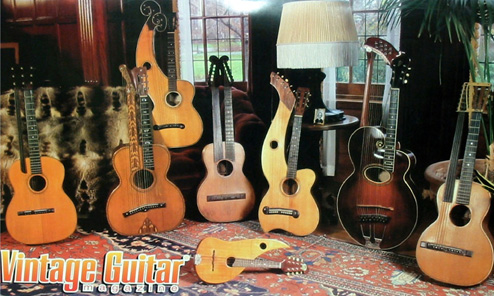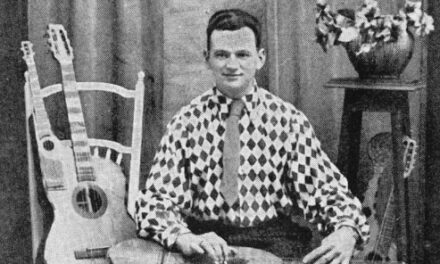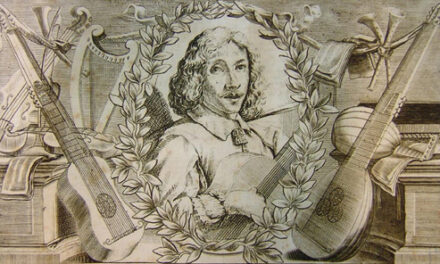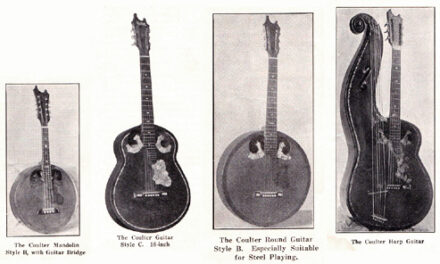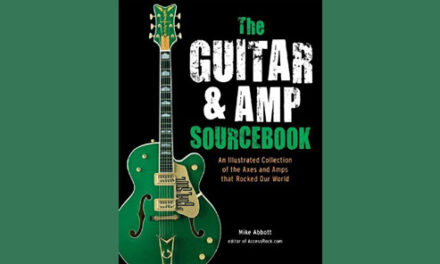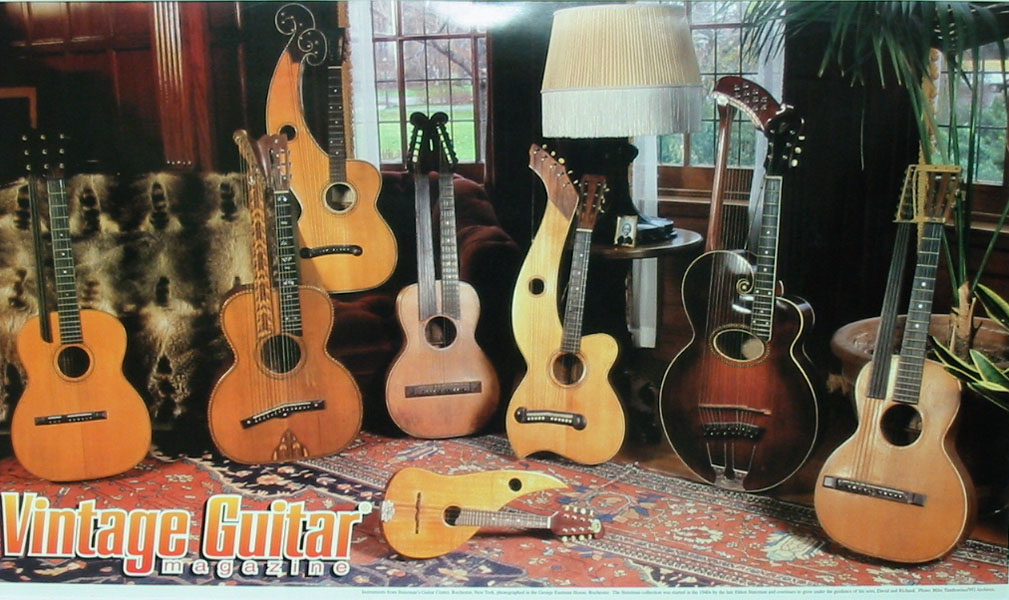
Some of you may remember an obscure “harp guitar poster” from Vintage Guitar magazine some years ago. Amazingly, I missed it and still haven’t found one, though I have a decent image (courtesy of Bob Hartman, some years ago). It included an impressive 8 American harp guitars of every style, from a garden variety Gibson Style U and Dyer to a couple of one-of-a-kind instruments. These latter were obviously what I was most interested in tracking down and getting info on, though that would take some years.
In 2009, John Doan happened to visit Stutzman’s Guitar Center in Rochester, New York, where the harp guitars (and so much more) are still on display. These are mostly instruments that store founder Eldon Stutzman had collected over the years and now managed by son Dave, the current owner. John snapped the best photos he could under the circumstances and shared them with me at the end of 2009. I still have to update the images and provenance on the site, but will now give this little profile on them.
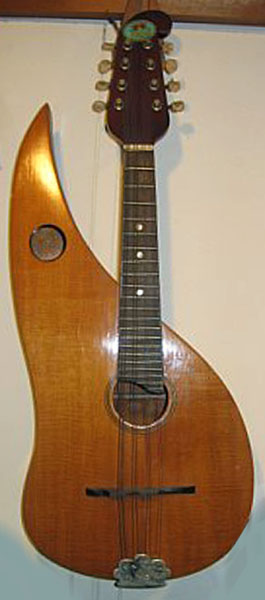 Regal Mandolin
Regal Mandolin
What first attracted my attention in the group shot was the lone little harp mandolin, only because it was one I had never seen before, and remains the only example of this vintage Regal hollow-arm mandolin that I am aware of.
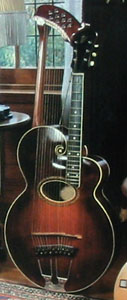 Gibson Style U
Gibson Style U
Looks like a late ‘teens or early ‘twenties specimen in great condition.
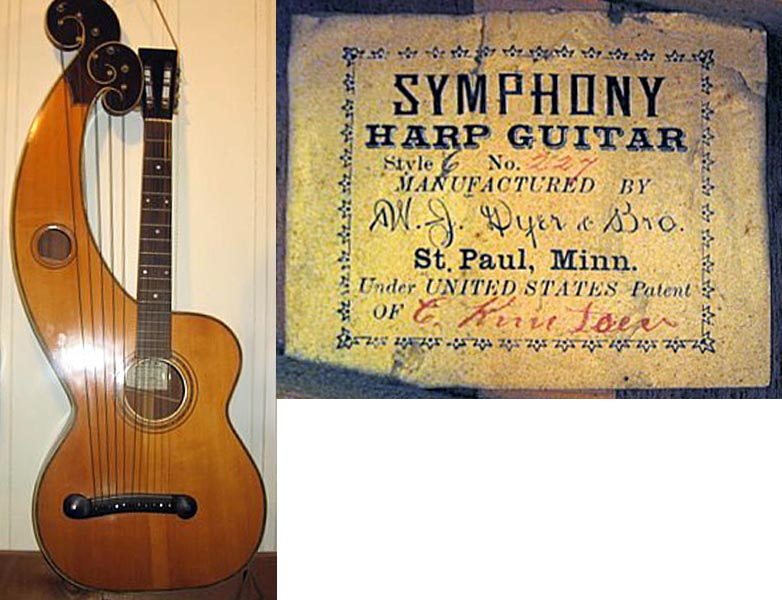
The Style 6 Dyer is an important one, as it has a fantastic early Knutsen-signed label, with one of the lowest known numbers (277, which I now circa date to either 1907 or 1905).
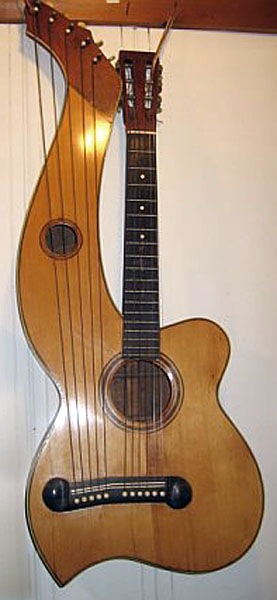
This rare Dyer Style 3 (five known to date, with one of the best ones sitting unsold on consignment on Harp Guitar Music, which, frankly, mystifies me) unfortunately has no label. These instruments, and their serial numbers, were integral to my (and Bob’s) re-thinking of the whole Dyer numbering system. Frustratingly though, the Style number was and remains a logistical conundrum that seems to involve either prescience or time travel.
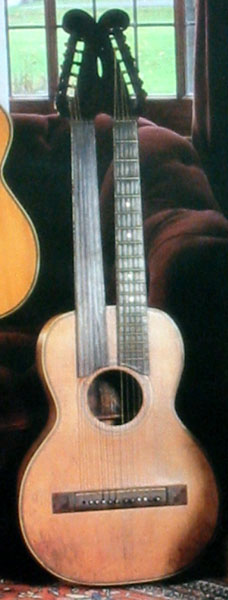
This one from the VG calendar, but not seen by John at the store, looks like the Oscar Schmidt Stella/Sovereign harp guitar.
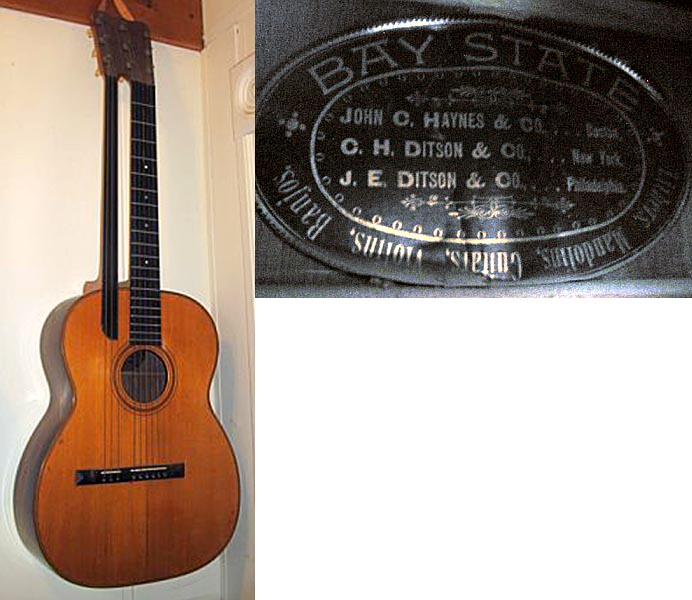
This is a Bay State – not too exciting perhaps, with very few subs (3), but still an important find. I’ve seen this style in various historical photos, which seem to match an original catalog image, but never an actual specimen. Bay State was a brand of the John C. Haynes Company in Boston before 1900.
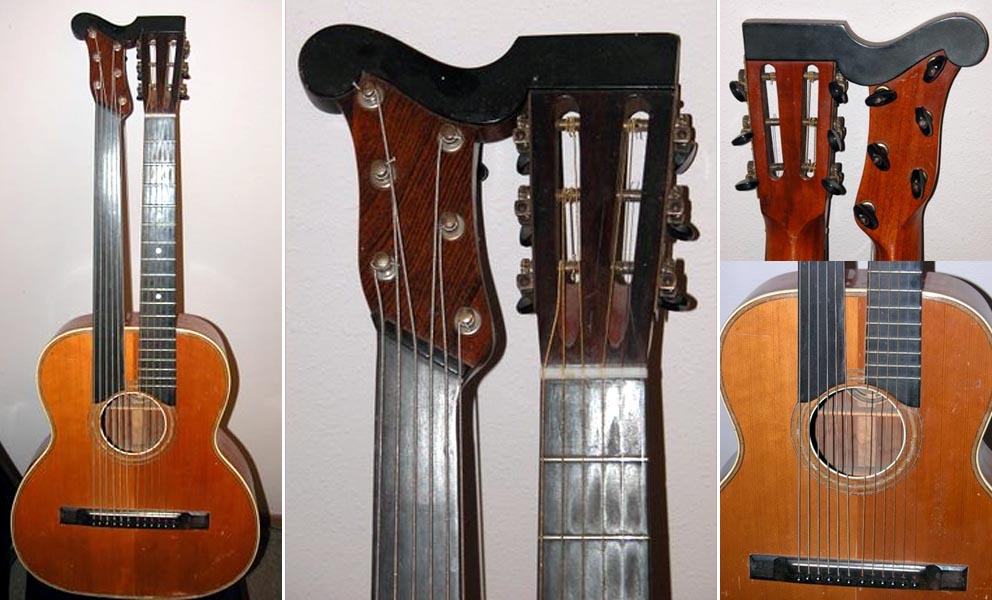 Howard
Howard
This one didn’t appear on the VG calendar. “Howard” was a brand of Wurlitzer (Cincinnati, OH), from around 1900 or later (Howard Wurlitzer was founder Rudolph’s first son). I have no idea who first came up with this specific double-neck headstock joining piece design, but this exact same thing has been seen on several other brands – strangely, in both wood and metal (see 4th row of the Form 2b Gallery).
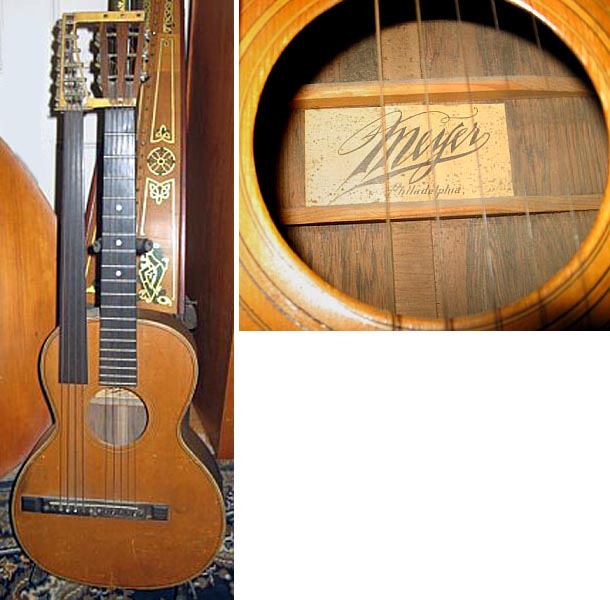
What I “knew” was a well-known Lyon & Healy from the 1890s and beyond was really a duplicate made by Meyer of Philadelphia. The bass headstock is the same all-metal array, the neck (and wood) terminating at the nut. A little too cyborg for me – still, one should never complain of having geared tuners on old harp guitars. As I’ve seen this on other makers (including a mysterious Bohmann), I can only assume that L&H somehow made the tuner assembly available to others. Meyer is a new entry for the Encyclopedia (not to be confused with H.F. Meyers of Chicago). This “singular” Meyer is from Philadelphia and must be the Frederick C. Meyer (c.1898-1927) listed in Mugwumps Encyclopedia of American Makers.
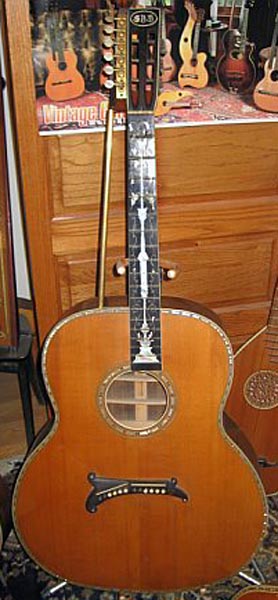
Dahlman/Akeson: Another beauty that wasn’t in the VG calendar.
I haven’t yet determined the relationship between Henry Dahlman, who patented his own harp guitar in 1892, and Carl Akeson, whose name appears (so far) in all Dahlman-style instruments. The former established the Henry Dahlman Manufacturing Company in Minneapolis, where Akeson also resided. Most likely, Akeson built them for Dahlman…but then why doesn’t “HDM Co.” appear on a label, rather than Akeson’s stamp? Dahlman also had a relationship with A. Holmgren, who published music and apparently sold Dahlman/Akeson instruments as well.
These are pretty interesting early harp guitars. They typically have 4 sub-bass strings, matching the patent, the unique and fascinating feature of which is how they are configured on the headstock. The first bass is in-plane with the neck’s low E, but they then “wrap around” in an arc towards the rear 0 as they are meant to be plucked with the left-hand thumb! (I’ve tried it – it actually works great) I don’t know if this special 6-bass specimen has the same design. It looks like a nice custom instrument, with fancy tree-of-life fingerboard inlay, binding and owner’s initials (?) in the headstock. The bridge shape is trademark Dahlman (though extended for the 6 subs). This shape doesn’t appear in the patent (which looks like more of a conceptual illustration), so may have been created by Akeson. Curiously, the same bridge occasionally shows up elsewhere, such as this Gould from Tennessee.
Gary (Dahlman’s grandson, if I’m not mistaken) – if you’re out there, I’m still anxious to continue our joint research on these historically important instruments.
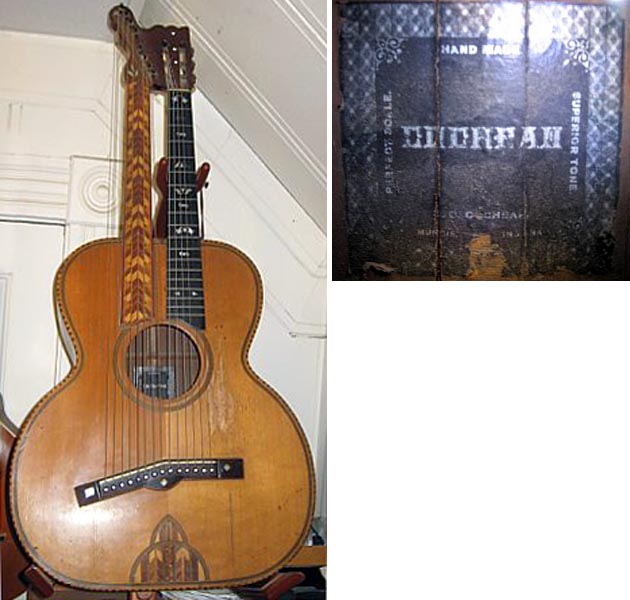
This was the one I was most anxious to learn about – what an interesting instrument, with its marquetry bass fingerboard and wood inlay in the top! Fancy inlays and purfling top it all off, with an original headstock design to support 9 basses. It turned out to be a new maker (as I imagined) from Muncie, Indiana – Cochran (as best I can make out). The label reads “Hand Made,” “Perfect Scale,” “Superior Tone” and (I think) “C. Cochran, Muncie, Indiana.” The only thing I found in Mugwumps’ Maker List was “Cochrane, Carolyn M. Buffalo NY 1900” – don’t know if this could be the same person. Another great and rare entry for the Encyclopedia.
A nice collection, to be sure! If anyone happens to visit the store, I would very much like to try to get better Gallery shots of the Dahlman and Cochran – full front, back, details, etc. Just tell Dave I sent you.

